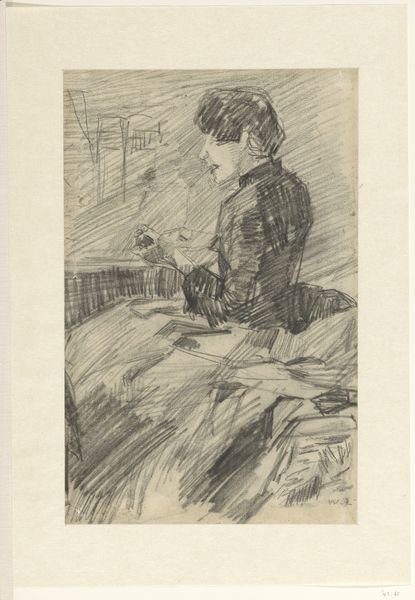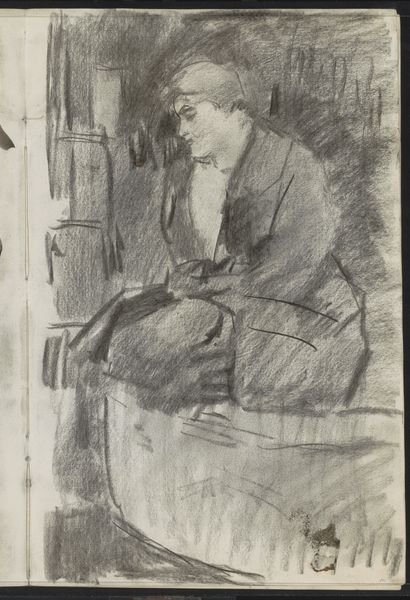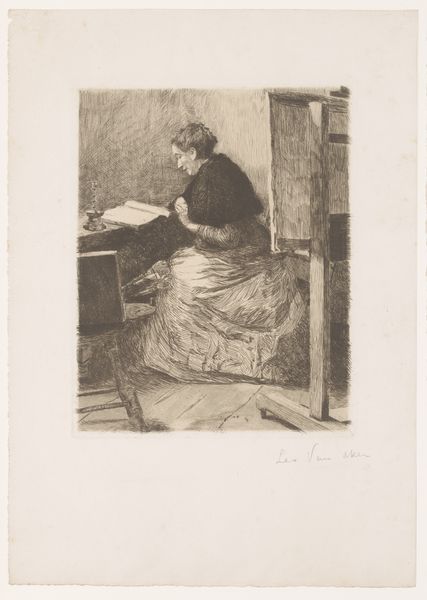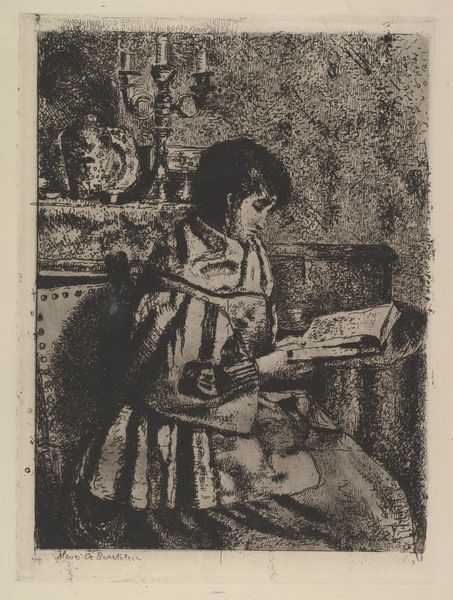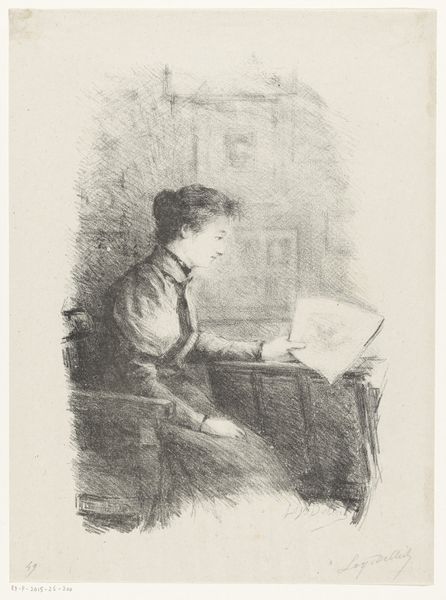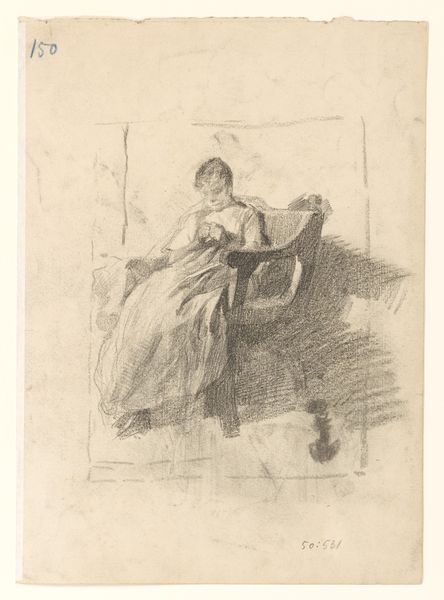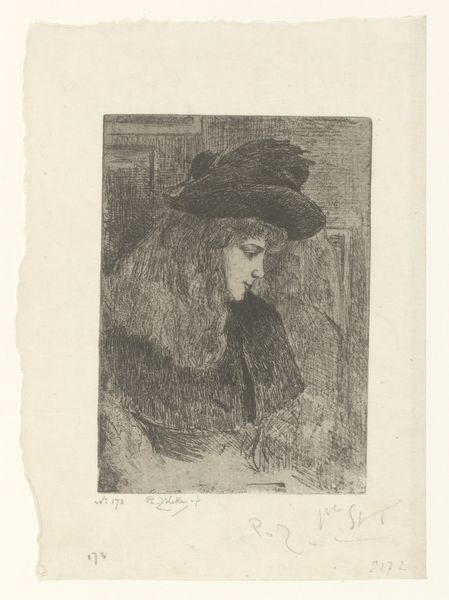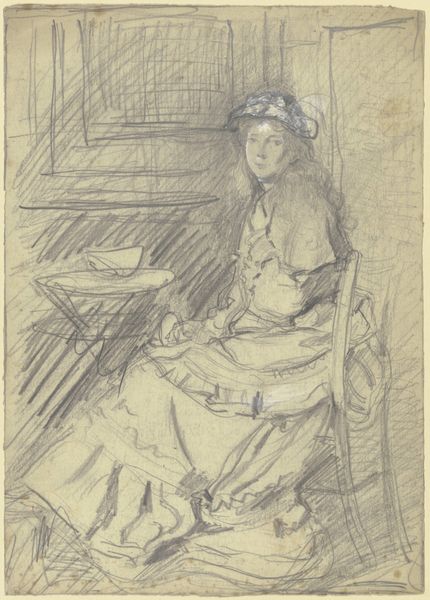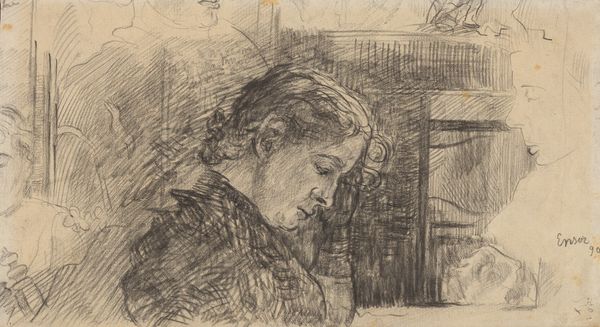
Dimensions: height 307 mm, width 244 mm
Copyright: Rijks Museum: Open Domain
Editor: Here we have "Laura Bacot Playing the Piano," a pencil drawing from 1914 by Jo Koster. It feels very intimate, almost like we're catching Laura in a private moment. The use of pencil creates a soft, almost melancholic mood. What strikes you most about this piece? Curator: The iconography here speaks volumes. Music itself is a powerful symbol of emotion and internal life. The piano, especially, becomes a vehicle for expression, for channeling feelings too complex for words. The artist depicts Laura absorbed. But look closer – her downcast gaze, combined with the somber tones, what does that evoke in you? Editor: A sense of quiet sadness, maybe? It makes me think about the context, 1914, the start of World War I. Curator: Precisely. Art often serves as a mirror to society, reflecting anxieties and unspoken truths. Is Laura finding solace in music or expressing the collective grief and uncertainty of the time? Koster has imbued this portrait with potent symbolism, hinting at the cultural climate of the era, wouldn't you agree? Editor: I do, it’s interesting to consider the broader implications in what I first perceived as a simple, private portrait. I hadn’t considered how cultural events and moods get wrapped up in what an image symbolizes. Curator: Indeed, every element - the subject, the medium, the year it was created - contribute to the enduring cultural weight of an image. I find it makes for deeper interpretations and new ways to consider and reflect on what it conveys and represents. Editor: Absolutely. I’ll never look at a “simple portrait” quite the same way again!
Comments
No comments
Be the first to comment and join the conversation on the ultimate creative platform.




